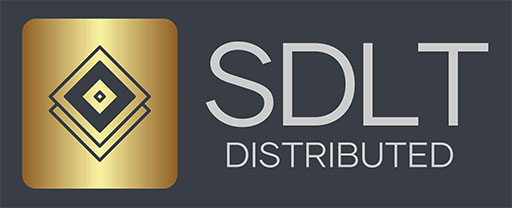Digital Assets Unlocked | Tezos
Tezos
Featured by Louis Chevalier | Adoption Manager Benelux
Tezos is a blockchain platform specialised in smart contracts and secure, upgradable tokenisation solutions for businesses and developers.
How does your infrastructure optimise the use of DLT for digital assets trading?
Our infrastructure offers a wide range of benefits for digital assets trading, issuance and distribution. Let aside the known and common aspects across other blockchains, Tezos has two main competitive advantage coming from the way it was built.
The on-chain governance offers Tezos the ability to evolve over time hence adjusting parameters and core elements to the needs and standards of the time. This ability to evolve also offers a formless system robust to fork wars.
The key element to retain here is the following. From a pure risk management standpoint, the formlessness of a chain offers long term stability. Hypothetically, should a company tokenised assets on a non fork-less chain, the issuer has to ask himself a set of questions:
- What is the residual value of my tokenise assets? In the case of a single fork, assets would exist in two different blockchains with potentially two different standards.
- How should one incurred (within accounting good practices) the existence of the same underlying assets as two tokens? Is the value divided by two of the tokens?
- What should be done of the forked or legacy tokens? Should one standard be burnt? What are the good practices in such a situation?
- What information should be communicated to investors? In the case of a fork war, some investors may be tempted to remain on the legacy chain while others would like to use the new one. What is the responsibility of the issuer?
Could you please give us some examples of how companies have used your infrastructure for tokenisation?
Some very relevant and concrete examples of how companies have used our infrastructure for tokenisation are:
Société Général Forge | A collaboration was held leading to the creation of a Tezos token protocol allowing Société Générale Forge to issue and manage structured products on the Tezos network through their token factory.
The token factory is a software suite intended to operate the issuance of digital financial products. It leads institutional investors to the introduction of standardized procedures increasing the scalability of blockchain operations.
BNP Paribas x Logical Pictures | A executive production company in audiovisual entertainment has launched the tokenization of a 100M alternative investment fund.
This tokenisation is based on a double-digital asset model:
- A security token will represent an exposition to the investment decisions of the firm and bring voting power.
- A utility token issued over time by the ownership of the security token, giving bonuses, goodies, and fan privileges.
Elevated Returns | A financial group focused on digitising traditional financial assets, has selected Tezos to issue fully compliant tokenized real-estate offerings, with a pipeline of real assets in excess of USD $1B targeted for these future token issuances.
ECB | In September 2020 the Eurosystem’s High-Level Task Force on Central Bank Digital Currency launched experimental work on a digital euro.
The experiments were grouped into four work streams. The second work-stream (“combined feasibility”) focused on how to combine centralised technology with distributed platform(s) based on distributed ledger technology (DLT).
As part of it, two approaches were considered. One of these is a tiered approach, on which a private fork of Tezos was selected to allow the implementation of the solution brought together by several central banks from the Eurosystem
Equisafe | Equisafe is a French company that develops a solution for unlisted companies to manage their investors and investments as well as support throughout the tokenisation of assets on Tezos. Their product is – among others – used by start-ups, real estate companies, and investors. The team is implementing the FA1.2/FA2 standards into their platform.
It is important to note here that these projects are of institutional grade and not DeFi per se.
Based on the evolution of your clients’ needs and knowing the potential of DLT technology, do you think that the finance system is destined to migrate to a decentralised blockchain-based system and move away from the current traditional centralised system?
Based on our user’s needs, the potential of DLT technology and blockchain, we do think that the future of the industry lays in a more decentralised system but perhaps not in the sense that most envision decentralisation. The financial world is mostly ruled today by good risk management practices. Decentralisation offers robustness as it removes the principle of single point of failure. The financial world is also ruled by legal frameworks to ensure stability and investors’ protection, as such, centralisation will be limited. DeFi like ecosystem can hardly be implemented by legacy financial actors in the sense that some rules need to be enforced notably around KYC, KYB, AML, CFT. A degree of decentralisation is acceptable but some control needs to be retained to remain compliant with the said rules.
A clear direction the market is taking is the increased used of public blockchain instead of private ones. Technology is now more and more scalable with L2s hence making the use of the private blockchain less interesting as it used to be in the early days of institutional experimentations.
The content of this article is intended to provide a general guide to the subject matter. Specialist advice should be sought about your specific circumstances.
